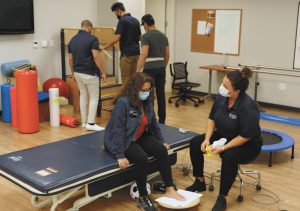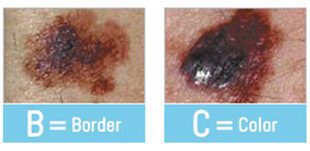By Dr. Cynthia Vaccarino, PT, DPT


However, that’s not always the case. As we get older, physical therapy can play just as much of a role in preventing injuries as it does in helping us successfully through our recovery. That’s why it’s important as we age to be proactive about high-risk injuries such as those that result from falling.
Falls are a worldwide public health concern, especially for seniors. According to the World Health Organization (WHO), 37.3 million falls that are severe enough to require medical attention occur each year. Additionally, the WHO noted that falls are also the second leading cause of unintentional injury deaths worldwide. Strategies to prevent these falls from occurring should include additional education, training, and safer environments according to the WHO.
So, what proactive measures can you take to prevent these potentially life-threatening falls? This is when physical therapy can come into play. The physical therapist will evaluate and assess the patient for risk of falls, and physical therapist assistants will assign fall prevention strategies and interventions to seniors based on select tests and measures that are designed to gauge one’s strength, agility, and balance. For example, physical therapist assistants conduct tests such as the Functional Reach Test and the Timed Up & Go Test (TUG) as ways of better understanding a patient’s fall risk and recovery potential. Physical therapist assistants can then assign and assist in exercises with senior patients to properly counteract these risks.
The Shirley Ryan Ability Lab details the Functional Reach Test as an exercise that is administered while a patient is standing next to, but not touching a wall. The patient is then instructed to, with the arm that is closer the wall, “reach as far as you can forward without taking a step.” Three trials are done, and the final score of the test comes out to the average score of the second two trials. The TUG Test begins with a patient sitting in a chair with their back against the chair’s backrest and arms on the chair’s arm rests. From that position, the patient is then timed while standing up, walking three meters, turning around, and returning to their original resting position in the chair. Test results from these quick and easy evaluations help provide a reliable foundation for physical therapist assistants to measure a patient’s fall risk and conduct the necessary preventative training.
As a patient, or to perhaps avoid becoming one, taking care of your body through the proper preventative measures before an injury happens is just as important as the recovery process after an injury has already occurred. That’s why we often see professionals in fields that require a lot physically constantly training in attempts to get ahead of potential injuries. But you don’t have to be a professional athlete, bodybuilder, or manual laborer to take the important steps necessary to take care of your body. That’s why when working with a patient, injured or not, it’s vital for physical therapist assistants to understand the full scope of their patients’ strengths and limitations to assign the correct interventions to prevent any injuries in the future. Workouts and testing exercises such as these are a significant part of a physical therapist assistant’s training and responsibilities in the field.
Working with a physical therapist assistant today can prevent tomorrow’s injury.
For more information on Hodges University’s Physical Therapist Assistant Program,
Visit Hodges.edu.
Dr. Cynthia Vaccarino, PT, DPT, is the Director of the Physical Therapist Assistant Program at Hodges University.
 Southwest Florida's Health and Wellness Magazine Health and Wellness Articles
Southwest Florida's Health and Wellness Magazine Health and Wellness Articles

